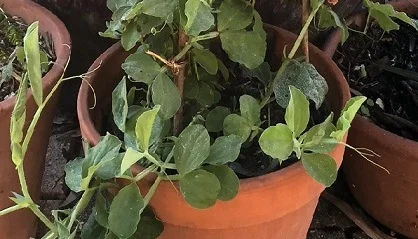Frostwatch intro: AntiDegrees
It’s now late May and that winter feeling is definitely here in southern Australia – especially with the early April ‘Break’ & plenty of rain.
In Hahndorf we’ve had more than 210mm in the last two months (warning: weather nerd danger), and Adelaide has had 150mm in the same period. Melbourne has had 470mm in the year to date – more than its entire annual rainfall in some years in the past decade.
It’s a good feeling. Wood fires are going, red wine is flowing, the street lights highlight the mist and the streets have that semi-permanent damp look. But with winter comes frost, at least to some parts.
Crunchy morning lawn
Readers may have seen the introductory post and Part 1 of my Scorchwatch series recently, where I talked about plant performance in summer extremes. In the Scorchwatch introductory post I touched on the reality that summer temperatures (both averages and fluctuations) vary markedly across the country. It is the same with winter.
Southern Australia is pockmarked with microclimates – often within short distances of each other. Stretches of frost-free suburbs across Adelaide and Melbourne are less than an hour’s drive away from frost traps and snow-prone hills. It’s the same with most capital cities.
It is unwise to generalise any location. Even on the Adelaide Plains – generally regarded as frost-free – there are pockets in the northern and northeastern suburbs (more inland but in valleys) where you can get light frosts. Same with outer northwest Melbourne.
In the Adelaide Hills the general rule is the western Hills around Stirling, Kangarilla and Kersbrook only get occasional light frosts due to their elevation, steep slopes and vegetation, so under canopies you can grow many wonderful frost-sensitive plants. But once you get to the Onkaparinga Valley (Hahndorf, Woodside, Lobethal) and further east (Mt Barker) frosts are common and occasionally severe, making gardening a challenge.
Californian poppy looking great … until encased in ice one morning in 2019
Hahndorf had fewer frosts than usual in 2019 due to the amount of cloud cover and rain. However when we did have frost it was on the harder side. About five nights dropped to -3 and -4, with three in a row in mid-June. This was a killer because plants damaged on the first night could not recover before being zapped again. So far in 2020 the wet & cloudy conditions have kept frosts on the lighter side. But it is only May.
Reading Sophie Thomson’s accounts of her Sophie’s Patch garden at Mt Barker Springs - about as far east as you can go before the Hills drop away – the frosts sound as brutal as Canberra’s.
Canberra frost – just another winter’s day (photo courtesy of ABC Canberra)
In an interview on the All the Dirt podcast she once spoke of the difference between a ‘-2 climate’ and ‘-5 climate’. She was comparing her old western Hills property at Ashton to her new one.
What struck me about Sophie’s account was not how unique it is (although it is interesting) but just how common it is. She could be describing any one of a thousand location comparisons within 30 kms of each other near a capital city.
Comparing a -2 climate to a -5 one doesn’t just highlight differences – it can make all the difference. It can mean ruling in & out dozens of plants, gardening methods, building materials and home routines. It can affect our entire living experience (ever had the pleasure of frozen hot water pipes in the morning?). For astute homeowners and buyers it brings into scope many questions of choice, design and structure.
While I won’t (and can’t) explore these broader design questions I want to use an upcoming series of Frostwatch posts to explore the degrees of frost tolerance in plants, similar to how the Scorchwatch series addresses extreme heat tolerance. This will hopefully give readers better information than is often on plant labels.






